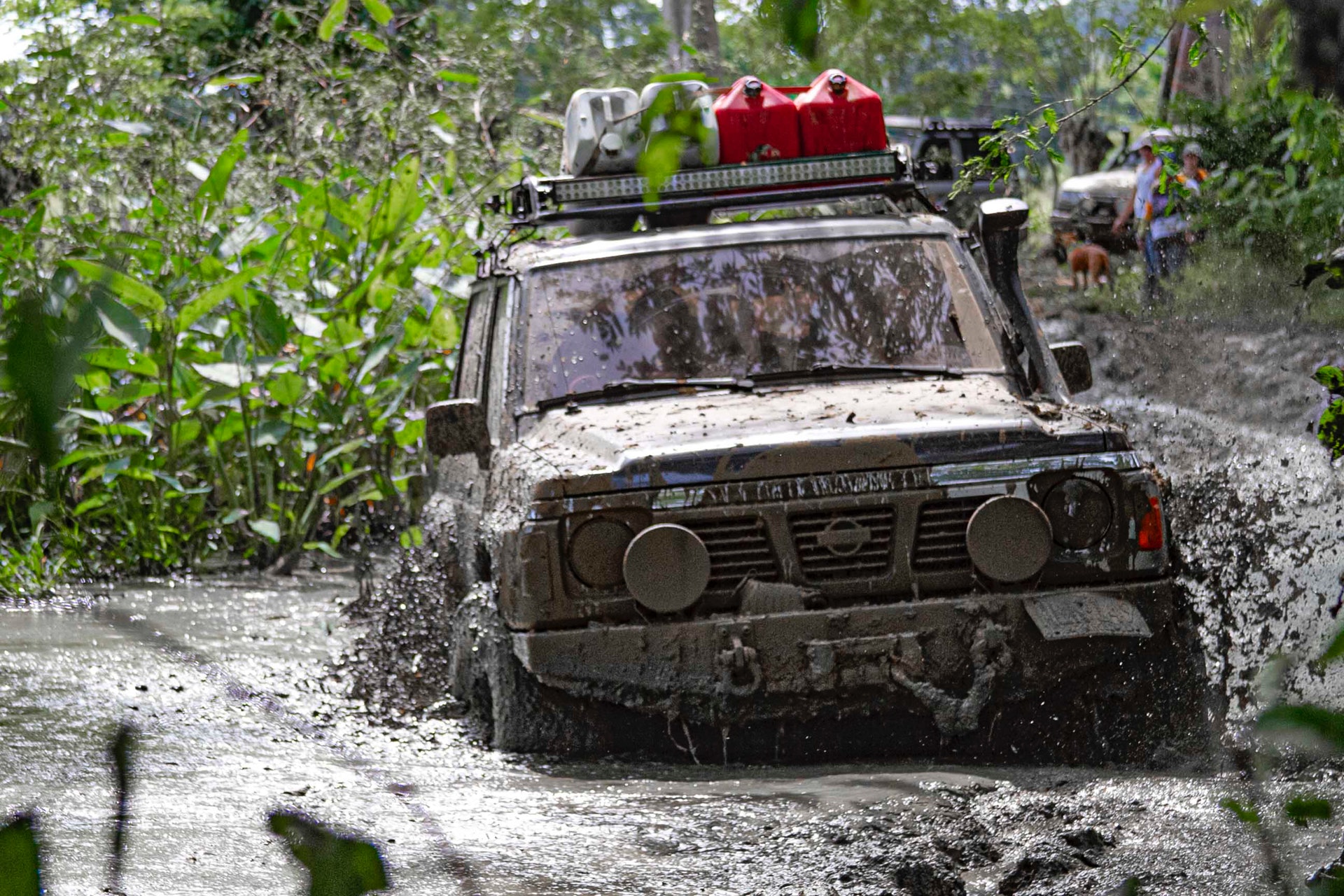Nissan has released full details of its all-new Y62 Patrol truck wagon not due for release in Australia until January 2013.
Word is the delay is due to hot demand for the new Patrol in larger LHD markets, which has pushed smaller RHD markets like Australia down the waiting list.
Nissan claims it is the most luxurious and technically advanced Nissan ever offered in Australia.
A new chassis platform, hydraulic chassis control system, four-wheel independent suspension, V8 engine, seven-speed automatic, multi-mode 4×4 system and increased emphasis on luxury defines the latest generation Patrol.
However, Nissan will continue to sell the previous generation Y61 wagon – with its 3.0 litre six cylinder turbo-diesel engine and live axles front and back – alongside the new Y62, to offer Patrol buyers a less luxurious back-to-basics model at a more affordable price.
The new Patrol, which can carry up to eight passengers with its three rows of seats, is loaded with stacks of active and passive safety features and a plethora of luxury items as standard equipment, aimed at the premium end of the luxury SUV buyer market (ie Land Cruiser, Range Rover etc).
We’ll cover all the luxury bling in more details when one becomes available for testing. In the meantime, here’s all the main highlights:
Background
The sixth generation Patrol is built at Nissan’s new Shatai Kyusha factory in Japan. Nissan engineers tested 200 prototypes at the company’s Motegi, Oppama and Tochigi proving grounds in Japan before sending them to The Middle East and Australia for real world evaluations.
Nissan claims its Japanese engineers completed more than 13,000 hours of testing across The Middle East and Australia, showing the importance of these two markets for this model.
Models
Y62 comes in three trim levels – ST-L (under $85,000), Ti (under $95,000) and Ti-L (under $115,000).
Engine
New generation 5.6 litre petrol V8 engine (code VK56VD) is an over-square, all-aluminium, DOHC, 32-valve, VVT design built at Nissan’s Yokohama plant.
It delivers 298Kw @ 5800rpm and 560Nm @ 4000rpm, with more than 90 percent of that torque (or more than 500Nm) on tap from just 2500rpm.
298Kw is about 400bhp on the old scale which is plenty of power and with 500Nm of torque (more than 400 ft/lbs) available at such low revs, it stacks up as a very tractable power plant.
Yet despite its power and torque gains over the previous Y61 model’s 4.8 litre six cylinder petrol engine, it’s a lot more fuel efficient when matched to the new seven-speed auto (14.5 L/100 kms vs 17.2 L/100 kms).
Transmission
A new seven-speed automatic with manual shift option should make it a nicer drive and particularly good for towing, with a broader spread of close ratios to play with and manually hold when you find the right one for a steep climb or descent.
There’s full-time 4WD with a choice of High and Low range of course, plus Limited Slip Diff (with full diff lock mode when needed), Hill Descent Control and Hill Start Assist. There’s no mechanical central diff this time – drive is fed to the front diff through an electronically controlled multi-plate clutch.
The new ‘ALL MODE 4×4’ drive system is controlled via a circular knob located just behind the auto gearshift, allowing the driver to electronically choose between four drive modes including sand, rock, snow or on-road driving.
The central knob also controls selection of 4H or 4L, activation of the rear diff lock, Vehicle Dynamic Control on/off and Hill Descent Control.
The only thing that looks a bit odd about this shifter arrangement (above) is that it’s located on the left-hand side of the console, which you would think is better suited to a LHD configuration than RHD. We’ll only know if this is an ergonomic problem once we’ve had a drive, but on the face of it this looks like another case of majority rules.
Chassis & Suspension
Suspension is now fully independent upper and lower wishbones at all corners, hung from what Nissan describes as a new high-stiffness body-on-frame structure with larger side frame rails, stiffer body-to-frame mountings and improved NVH.
Another notable addition to the Y62 chassis dynamics is Nissan’s Hydraulic Body Motion Control, which is not available on the entry level ST-L model but standard on the higher two (Ti and Ti-L).
The HBMC system replaces conventional shock absorbers with hydraulic cylinders linked to each other through lots of piping and controlled by motion sensors.
HBMC reduces body roll in high speed corners on sealed surfaces and, because it removes the need for anti-roll bars, HBMC also maximises suspension travel in extreme off road conditions.
Nissan claims this cutting-edge technology was developed for world rallying and that this is the first time the company’s has used it in a road application.
Weights & Measures
These latest-generation truck wagons are getting seriously large – and heavy.
The new Y62 is significantly larger than its 200 series Land Cruiser competitor and its Y61 stable-mate in overall length (5140mm), width (1995mm), height (1940mm) and wheelbase (3075mm), yet manages to keep the same turning circle (Y61 12.5 metres).
And as you’d expect, all that extra size and on-board technical wizardry adds considerably to the weighbridge, with kerb weights starting at 2739 kgs for the ST-L up to 2829 kgs for the top shelf Ti-L with all the fruit.
2829 kgs is getting damn near three tonnes, which eclipses the kerb weight of even some large US pickup trucks like the Toyota Tundra and Ford F-150 SVT Raptor (see separate stories at Truck Jungle).
That’s a lot of dead weight to be carrying the kids to school in, mum, but it’s a strong point for towing big loads, as it provides a rock steady platform for its peak (braked) tow rating of 3.5 tonnes (750 kgs unbraked).

